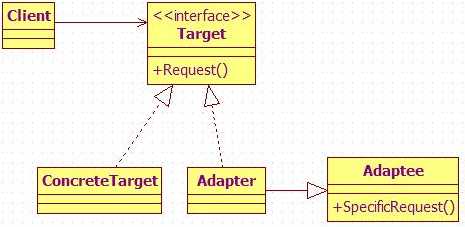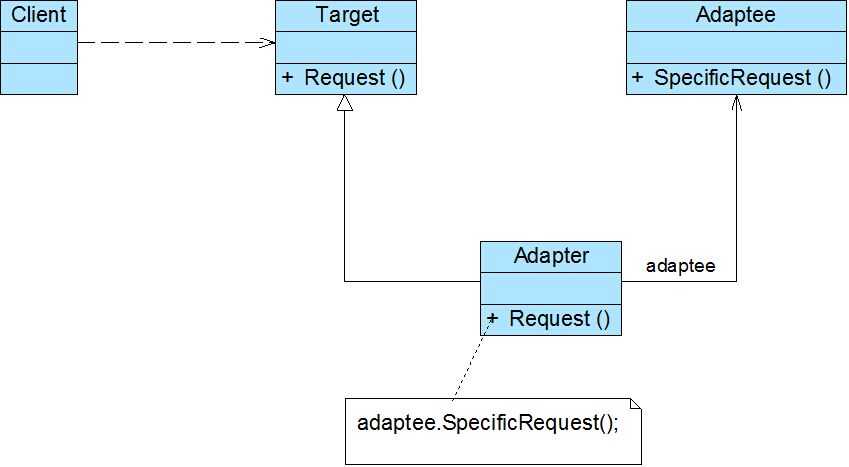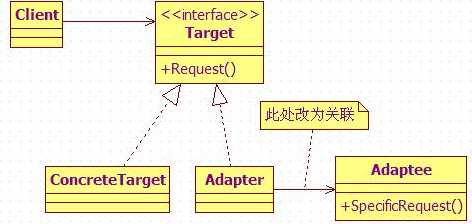设计模式第一弹—适配器模式
Posted yuhuameng
tags:
篇首语:本文由小常识网(cha138.com)小编为大家整理,主要介绍了设计模式第一弹—适配器模式相关的知识,希望对你有一定的参考价值。
1、场景
2、类别
2.1类代理


// 已存在的、具有特殊功能、但不符合我们既有的标准接口的类
class Adaptee {
public void specificRequest() {
System.out.println("被适配类具有 特殊功能...");
}
}
// 目标接口,或称为标准接口
interface Target {
public void request();
}
// 具体目标类,只提供普通功能
class ConcreteTarget implements Target {
public void request() {
System.out.println("普通类 具有 普通功能...");
}
}
// 适配器类,继承了被适配类,同时实现标准接口
class Adapter extends Adaptee implements Target{
public void request() {
super.specificRequest();
}
}
// 测试类
public class Client {
public static void main(String[] args) {
// 使用普通功能类
Target concreteTarget = new ConcreteTarget();
concreteTarget.request();
// 使用特殊功能类,即适配类
Target adapter = new Adapter();
adapter.request();
}
}
2.2对象代理


// 适配器类,直接关联被适配类,同时实现标准接口 class Adapter implements Target{ // 直接关联被适配类 private Adaptee adaptee; // 可以通过构造函数传入具体需要适配的被适配类对象 public Adapter (Adaptee adaptee) { this.adaptee = adaptee; } public void request() { // 这里是使用委托的方式完成特殊功能 this.adaptee.specificRequest(); } } // 测试类 public class Client { public static void main(String[] args) { // 使用普通功能类 Target concreteTarget = new ConcreteTarget(); concreteTarget.request(); // 使用特殊功能类,即适配类, // 需要先创建一个被适配类的对象作为参数 Target adapter = new Adapter(new Adaptee()); adapter.request(); } }
以上是关于设计模式第一弹—适配器模式的主要内容,如果未能解决你的问题,请参考以下文章